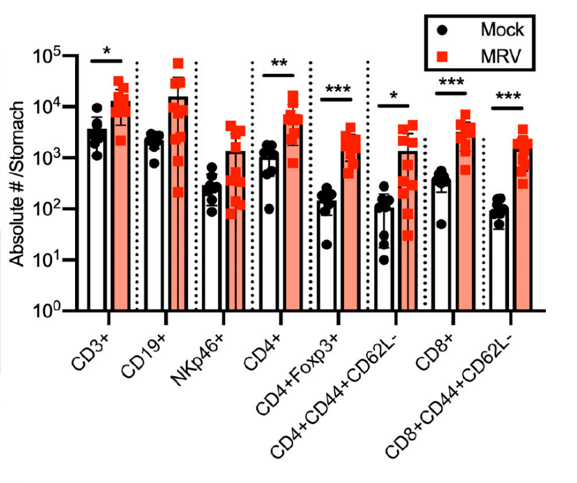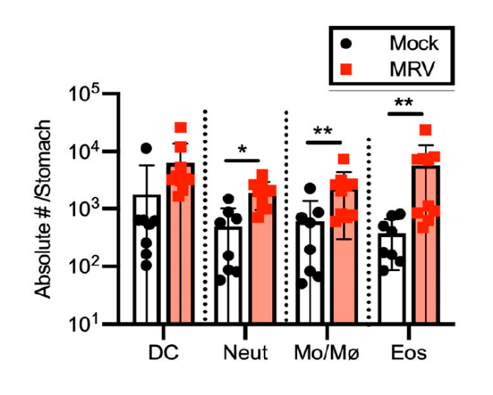Murine roseolovirus (MRV) is closely related to human roseoloviruses. Murine roseolovirus was previously known as mouse thymic virus or MTV, which is common in wild mice, which has been known to cause thymic necrosis and T cell depletion in neonatal mice. The laboratory of Wayne Yokoyama’s at Washington University previously determined that MTV is a murine roseolovirus and homolog of HHV-6A, HHV-6B and HHV-7. Roseoloviruses have been proposed as causes of autoimmunity, but the mechanisms by which this might happen are poorly understood.
In a new report, Yokoyama’s laboratory infected newborn mice with MRV and studied the impact on the development of central and peripheral tolerance. Neonatal infection with MRV produced several changes that would disrupt the development of central tolerance: a reduction in the numbers of medullary thymic epithelial cell numbers, reduction in dendritic cells in the thymus, reduced thymic expression of tolerance-related molecules, and increased apoptosis of thymocytes at the stage of negative selection. Thus, neonatal MRV infection disrupted normal thymocyte development during the stage of negative selection, likely altering the development of conventional and regulatory CD4+ thymocytes early in life, during the stage of negative selection. Finally, infecting neonatal mice with MRV and immediately treating the mice with ganciclovir eliminated all of these abnormalities, strongly incriminating the virus in the process of disrupting central tolerance.
 Neonatal MRV infection also was followed in adult mice by the development of autoimmune gastritis, as well as a wide variety of autoantibodies (including many targeting tissues other than the gastric mucosa). These manifestations of autoimmunity were dependent on the virus replicating during the neonatal period: there was no evidence of active infection of the stomach in the adult animals that developed autoimmune gastritis. The development of autoimmune gastritis was shown to be dependent on autoreactive CD4+ T cells and on IL-17, a central cytokine in autoimmunity.
Neonatal MRV infection also was followed in adult mice by the development of autoimmune gastritis, as well as a wide variety of autoantibodies (including many targeting tissues other than the gastric mucosa). These manifestations of autoimmunity were dependent on the virus replicating during the neonatal period: there was no evidence of active infection of the stomach in the adult animals that developed autoimmune gastritis. The development of autoimmune gastritis was shown to be dependent on autoreactive CD4+ T cells and on IL-17, a central cytokine in autoimmunity.

Numbers of lymphoid and myeloid cells in stomach of mice following either real MRV infection or mock MRV infection. Statistical significance was calculated using multiple Student’s t tests.
This report is interesting because previous studies have suggested a link between HHV-6 and several autoimmune diseases: connective tissue disease (Broccolo 2013), systemic sclerosis (Caselli 2019), autoimmune thyroiditis (Caselli 2017) and multiple sclerosis (Engdahl 2019). However, the mechanisms linking HHV-6 to these diseases have remained unknown.
Taken together, this study shows that infection of neonatal mice with MRV disrupts central tolerance, and is followed by autoimmunity. The autoimmunity is likely due to the disruption of multiple elements required in the development of central tolerance, rather than a simpler explanation such as molecular mimicry. Whether human roseolovirus infections very early in life might also be causes of human autoimmune diseases awaits further study.
Read the full article: Bigley 2022

